António Rodrigues
GS-QA: Comprehensive Quality Assessment Benchmark for Gaussian Splatting View Synthesis
Feb 18, 2025Abstract:Gaussian Splatting (GS) offers a promising alternative to Neural Radiance Fields (NeRF) for real-time 3D scene rendering. Using a set of 3D Gaussians to represent complex geometry and appearance, GS achieves faster rendering times and reduced memory consumption compared to the neural network approach used in NeRF. However, quality assessment of GS-generated static content is not yet explored in-depth. This paper describes a subjective quality assessment study that aims to evaluate synthesized videos obtained with several static GS state-of-the-art methods. The methods were applied to diverse visual scenes, covering both 360-degree and forward-facing (FF) camera trajectories. Moreover, the performance of 18 objective quality metrics was analyzed using the scores resulting from the subjective study, providing insights into their strengths, limitations, and alignment with human perception. All videos and scores are made available providing a comprehensive database that can be used as benchmark on GS view synthesis and objective quality metrics.
Evaluation of strategies for efficient rate-distortion NeRF streaming
Oct 25, 2024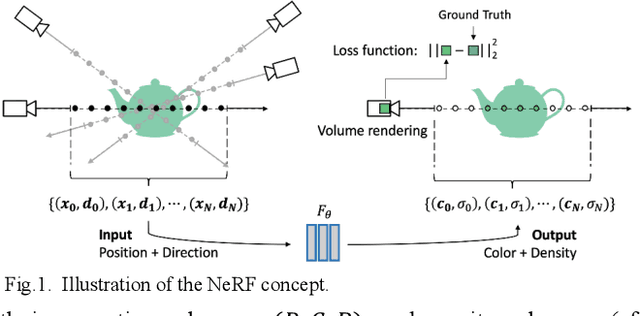
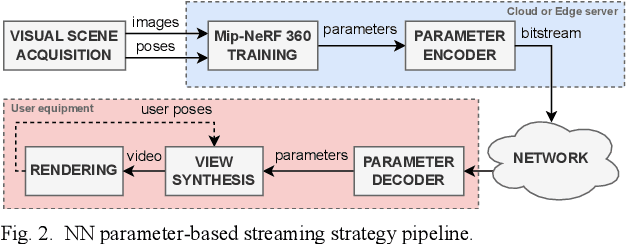
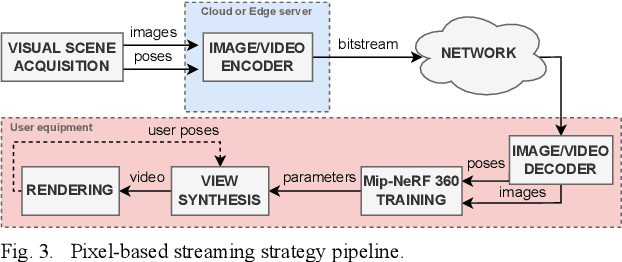
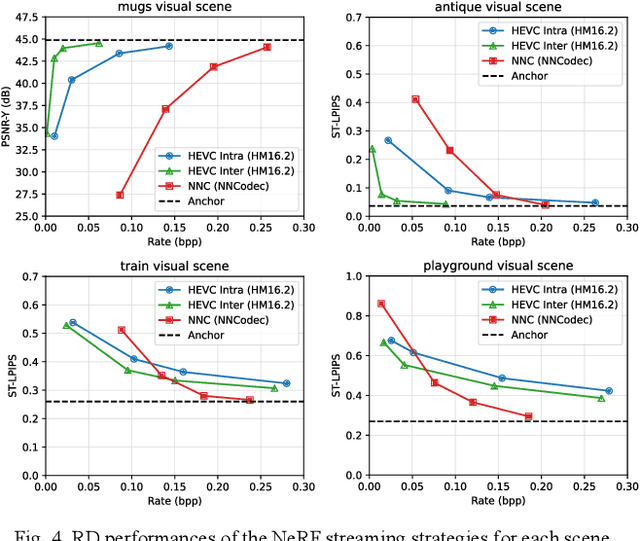
Abstract:Neural Radiance Fields (NeRF) have revolutionized the field of 3D visual representation by enabling highly realistic and detailed scene reconstructions from a sparse set of images. NeRF uses a volumetric functional representation that maps 3D points to their corresponding colors and opacities, allowing for photorealistic view synthesis from arbitrary viewpoints. Despite its advancements, the efficient streaming of NeRF content remains a significant challenge due to the large amount of data involved. This paper investigates the rate-distortion performance of two NeRF streaming strategies: pixel-based and neural network (NN) parameter-based streaming. While in the former, images are coded and then transmitted throughout the network, in the latter, the respective NeRF model parameters are coded and transmitted instead. This work also highlights the trade-offs in complexity and performance, demonstrating that the NN parameter-based strategy generally offers superior efficiency, making it suitable for one-to-many streaming scenarios.
EAMDrift: An interpretable self retrain model for time series
May 31, 2023
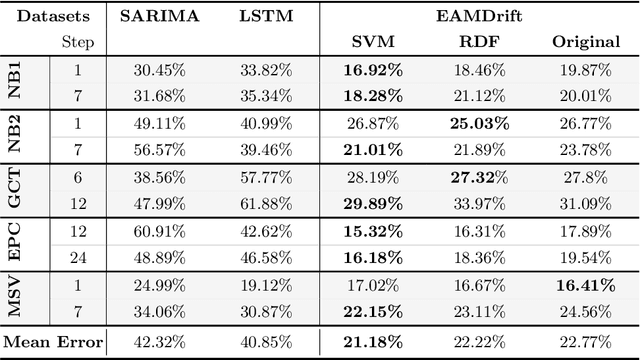
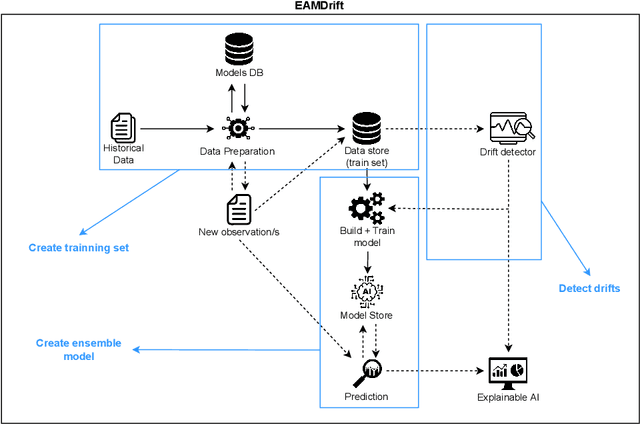

Abstract:The use of machine learning for time series prediction has become increasingly popular across various industries thanks to the availability of time series data and advancements in machine learning algorithms. However, traditional methods for time series forecasting rely on pre-optimized models that are ill-equipped to handle unpredictable patterns in data. In this paper, we present EAMDrift, a novel method that combines forecasts from multiple individual predictors by weighting each prediction according to a performance metric. EAMDrift is designed to automatically adapt to out-of-distribution patterns in data and identify the most appropriate models to use at each moment through interpretable mechanisms, which include an automatic retraining process. Specifically, we encode different concepts with different models, each functioning as an observer of specific behaviors. The activation of the overall model then identifies which subset of the concept observers is identifying concepts in the data. This activation is interpretable and based on learned rules, allowing to study of input variables relations. Our study on real-world datasets shows that EAMDrift outperforms individual baseline models by 20% and achieves comparable accuracy results to non-interpretable ensemble models. These findings demonstrate the efficacy of EAMDrift for time-series prediction and highlight the importance of interpretability in machine learning models.
 Add to Chrome
Add to Chrome Add to Firefox
Add to Firefox Add to Edge
Add to Edge